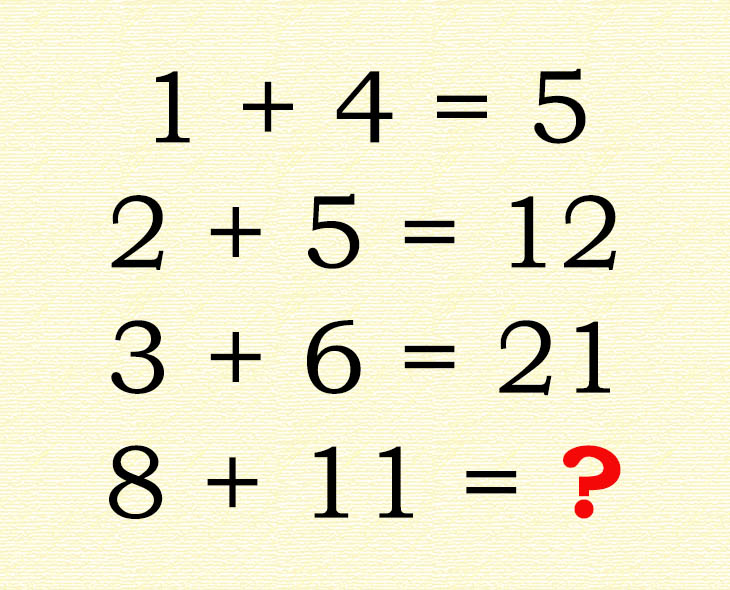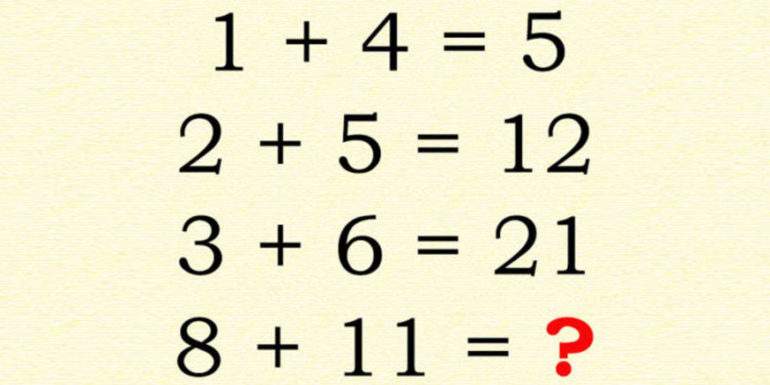
The first solution is:
- Most agree that 1 + 4 = 5.
- In the next line, add 2 + 5 to the sum of 5 in the equation above. That gives you the answer of 12.
- Next, apply the same formula: 3 + 6 = 9, then add the 9 to the sum in the equation above (12) to get the total of 21.
- The last step is to take the 8 + 11 in the last equation, which equals 19, and add it to the sum of the previous problem (21). This gives you a total of 40.
However, there is a popular second solution:
- The obvious truth is: 1 + 4 = 5. But you could also reach 5 by adding 1 to 4 times 1.
- In the same fashion, with the second line, 2 + 2(5) = 12.
- And the next line: 3 + 3(6) = 21.
- Using this method to solve the problem, add 8 to 8 times 11 to get 96.
Which solution did you find? 40, or 96?
Or maybe you see the problem in a way different than the two mentioned above? What do you see? What is your interpretation?
For more of an explanation of the solutions to this math problem, watch this video:
Sources: WIKR || via davidwolfe
1
2









